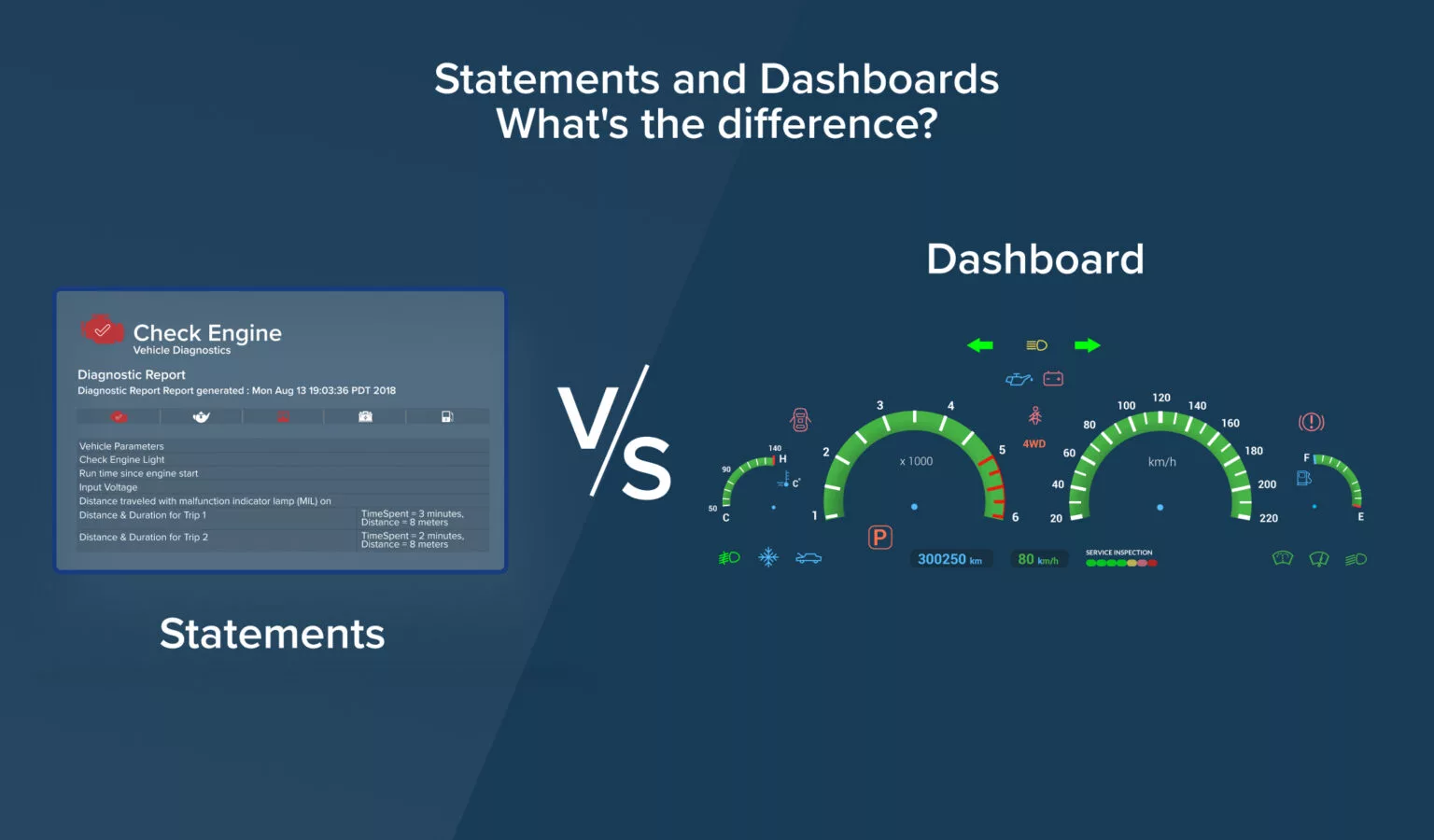
Ever had to get an engine diagnostic test done on your car?
If so, you may have nervously awaited the results, hoping your car wouldn’t require an expensive repair. When the test was done you’d get a printout from the diagnostic equipment, reporting important parameter values the mechanic could interpret in regards to the health of your engine (see Statement image above). Continuing with the car analogy, the dashboard on your car receives real-time data as you drive, continuously changing and informing you of key performance indicators (KPI’s) (see Dashboard image above). Since these indicators are in real-time they help you monitor your engine and keep an eye out for signs to help you avoid an expensive repair or worse yet a breakdown on the highway.
Similarly, a Sales Compensation Statement is a printout of measurements at a point in time. In other words, a “statement” of how you did over a particular time period. In comparison, a Sales Compensation Dashboard tells you how you’re doing now. Statements are static and timestamped whereas Dashboards are dynamic and constantly changing as new data is received. Just like your car, both are important and together provide valuable feedback as to how things are going.
The Similarity
Now that we know the difference, let’s explore what they both have in common. Getting a pay stub for your prior month’s sales and only seeing a dollar amount without detail creates all kinds of questions. What sales are included? Was the correct commission rate applied? Did I hit the accelerator? It’s like getting your credit card bill with nothing showing except the amount you owe. A Statement answers these questions by providing the underlying detail behind a payout. Similarly, without a Dashboard refreshing KPIs on a frequent basis, a sales rep is driving blind, and again, lack of information breeds more questions. Both the Sales Compensation Statement and Dashboard provide a window of visibility into your underlying performance detail. Simply put, they answer the questions a sales rep has regarding their performance as it relates to compensation.
The Benefit
So far we’ve seen how Statements and Dashboards are different and alike. Now let’s discuss some practicality. Why are they so critical to a Sales Compensation system? What are the bottom line benefits of having these?
Here’s a scenario that’s quite common in the world of sales compensation:
A growing small business is meeting goals and keeping the sales reps happy with their compensation even though they only receive a pay stub with very little detail. A series of economic and competitive events cause a downturn in profits. Consequently, sales reps begin to see their commissions shrink, causing an increase in questions submitted to the sales compensation administrator. Meanwhile, leadership takes measures to increase profits by making changes to the sales comp plans which causes even more questions. As the sales reps beg for visibility, frustration increases, and morale decreases causing sales to slip even more.
In the above scenario, the root cause of the frustration to the sales reps is a lack of visibility. A sales rep needs a clear understanding of what they are getting paid and what can be done to improve on it. So in this scenario here are the benefits a Statement and Dashboard would provide.
- Statement: Present the underlying details of the commission payout enabling a sales rep to confidently answer their own questions such as:
- What customers, products, and/or territories did I get paid on?
- What commission rate was used for a particular sales or group of sales?
- What are my sales by month, YTD, and category?
- Did I have any chargebacks?
- Dashboard: Present the current state of my performance measured against the goals that impact my pay. For example:
- Where am I at in the percent attainment of my quota?
- How far am I from hitting the next commission rate tier or accelerator?
- How am I doing in relation to my peers?
- Where am I at in regards to hitting my bonus?
Lastly, if you are thinking about implementing a Statement or Dashboard into your sales compensation system, here are some guidelines:
The Benefit
- Statement
- Reduce the number of Sales compensation payment disputes
- Instill confidence in your sales reps that they are being paid correctly
- Enable sales reps to spend more time selling and less time reconciling their payout
- Dashboard
- Display KPI’s in alignment with a corporate strategy for motivational alignment
- Motivate sales reps by providing visibility into current performance in relation to attaining quota or the next rate tier, accelerator, bonus, etc.
- Inform a sales rep as to how they are doing in relation to other sales reps
The Design
- Use naming conventions familiar to the sales reps
- Capture just enough detail to accomplish the purpose and not too much to clutter the message
- Implement a clear/simple layout so users don’t get overwhelmed and decide it’s not worth the time
- Ensure sales reps can only see their info and/or their subordinate’s info
